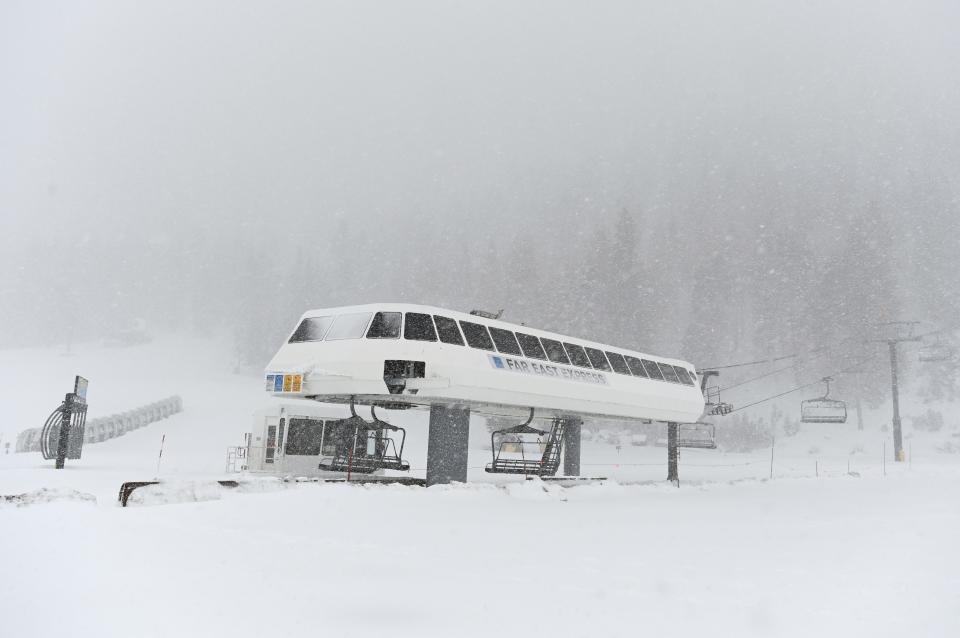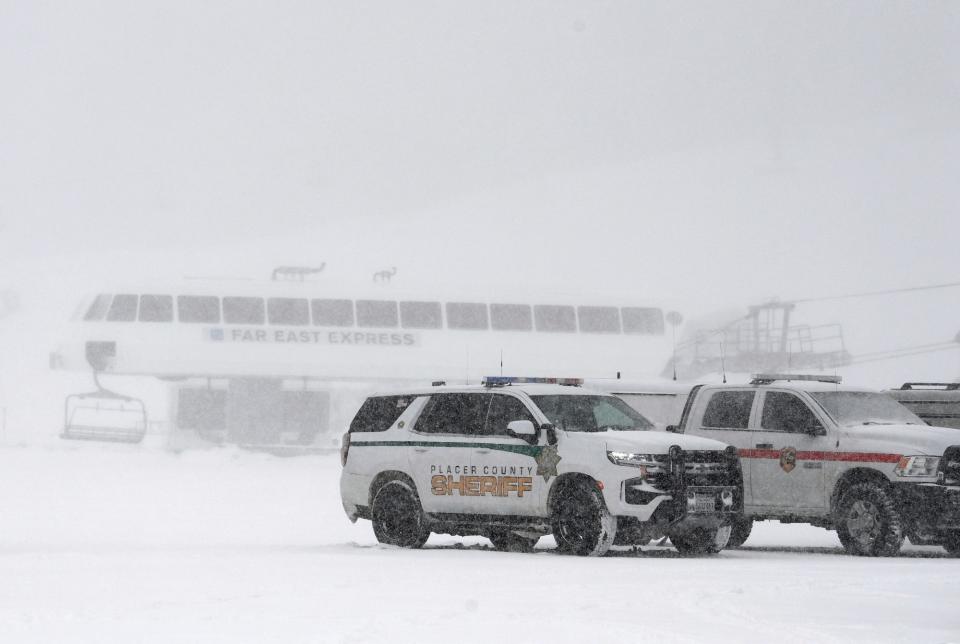Forecast warned of avalanche risk ahead of deadly avalanche at Palisades Tahoe ski resort
One person was killed and three people were injured in an avalanche Wednesday that swept through a ski resort near Lake Tahoe, which had just opened a section of expert trails despite an intense winter storm and after at least one forecast warned of "considerable" avalanche risk.
Authorities said Wednesday the search for other victims or survivors had concluded, and no other people had been reported missing.
Here's what we know about the avalanche.
Where was the avalanche?
The avalanche hit the Lake Tahoe area Wednesday morning, and officials were forced to close Palisades Tahoe, a ski resort over 100 miles north of Sacramento to search for victims and survivors.
It hit at approximately 9:30 a.m. local time, according to the Palisades Tahoe, on the Palisades side, above the GS gully area of the KT-22 lift, which had opened for the first time this season 30 minutes earlier. Both sides of the mountain were closed Wednesday; it's unclear if they will reopen Thursday.

Who died in the Lake Tahoe avalanche?
Authorities identified the person killed as 66-year-old Kenneth Kidd, a resident of Point Reyes and Truckee, northeast of Palisades Tahoe. According to an earlier statement issued by the resort, Kidd sustained fatal injuries from the incident and was pronounced deceased by Tahoe Forest Hospital.
Three other skiers sustained non-life threatening injuries, according to the resort. The death Wednesday was the first U.S. avalanche fatality of the season, according to the Colorado Avalanche Information Center, which monitors avalanches nationwide.
Nonprofit warned of 'considerable' avalanche risk hours before incident
Ahead of the deadly avalanche forecasters with the nonprofit Sierra Avalanche Center warned that impacts of a large winter storm increased the possibility of avalanches across the central Sierra Nevada, including many of the mountains surrounding Lake Tahoe.
"A strong winter storm will enter our area today bringing high intensity snowfall and gale force winds," the nonprofit wrote early Wednesday on its website at 6:39 a.m., about three hours before the deadly incident. "Avalanche danger will quickly increase today with avalanches occurring in a variety of areas by this afternoon. A period of high avalanche danger may occur in the early evening hours."
On a scale of 1-5, the nonprofit said the risk of an avalanche Wednesday was a 3 – "considerable."
According to the National Weather Service, the storm dropped up to eight inches of snow throughout northern California and swept the Pacific Northwest with blizzard conditions.
The cause of the avalanche remains under investigation, the resort and law enforcement said.

Why was the resort open?
Despite the storm and at least one warning of avalanches, the Palisades Tahoe ski resort opened the K-22 trail, which serves runs for skilled skiers and snowboarders, on Wednesday at 9 a.m.
At a news conference, Michael Gross, the vice president of mountain operations at Palisades Tahoe, said it's "absolutely" typical to open trails during a snowstorm, as long as proper considerations are made.
"We'll evaluate the conditions and, based and our expertise, our experience and history ... if we deem conditions safe, we will open," he said.
Gross said patrols completing avalanche assessments had been ongoing since Sunday, ahead of the opening of the K-22 lift.
"The past few days we've been out there doing control work, evaluating weather conditions, setting up safety markings, hazard markings ... getting prepared for today's opening," he said.
The risks of snow sports
Snow sports are inherently risky. Skiers and snowboarders have been advised by industry experts, such as the NSAA, to be aware of adverse weather conditions, changing snow conditions, machinery working on slopes, and other recreationists.
During the 2022-23 U.S. ski season, the NSAA reported 46 skier and snowboarder fatalities in ski areas. The total number of fatalities for the season was also slightly higher than the 10-year industry average of 42 fatalities per season, according to the NSAA.
The primary factors of these fatal incidents included speed, loss of control, and collisions with objects on slopes. The season also had record-breaking snowfall, the NSAA said, which contributed to an "unusually high number" of deep snow immersion fatalities.
Numerous incidents have occurred near Lake Tahoe, including Wednesday's avalanche.
In January 2020, a skier died at Alpine Meadows in the area between Scott Chute and Promised Land, the Reno Gazette-Journal, part of the USA TODAY Network, reported. And one of the deadliest avalanches in U.S. history also occurred at Alpine Meadows.
In late March of 1982, a series of storms dropped nearly 7 feet of snow in four days, piling on top of a base snowpack already measuring more than 7 feet. While Alpine Meadows closed due to the heavy snow, a crew of 13 remained on site.
The avalanche brought millions of tons of snow down, destroying heavy equipment and a two-story ski lift workers' building. The slide killed seven people, including an 11-year-old girl.
Contributing: Associated Press; Thao Nguyen, Amaris Encinas, USA TODAY.
This article originally appeared on USA TODAY: Tahoe avalanche warning forecast before deadly incident killed skier

